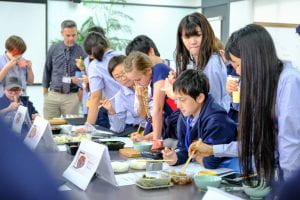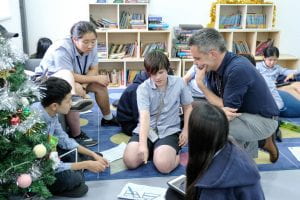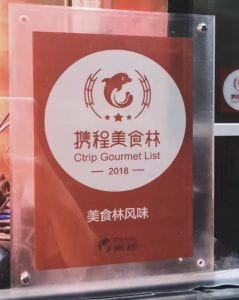Written by: Andy Clapperton, Head of Learning
At YCIS Pudong, we know that authentic learning happens when it is anchored in the real world and when we are motivated, and there is nothing more motivating than knowing your work is going to go public and be read across China and beyond. We always seek to foster curiosity with engaging activities that stimulate inquiry: everybody loves talking about, researching and, of course, eating, food, so for this project we brought together various curricular perspectives for students to delve into the eight delicious regional cuisines of China.
The project was launched by Hu Zheng Yan, Operation Director at C-Trip Gourmet List, who sparked our students’ imagination with a video calling them into action. The investigation was all-encompassing, including elements as wide ranging as climate, terrain, culture, history, religion, migration, globalisation, technology, trade and eco issues, as well as demographics and socioeconomics. They had to consider how best to communicate their research to stakeholders – readers with an interest in travel and food – and their final products are the articles that are showcased on Trip.com’s WeChat channel.
The first of these articles, (https://mp.weixin.qq.com/s/z81nxN0SUOOlPXjQ3ewI4Q) put together by Samuel ’25, Bella ’25, Katherine ’25, Bao ’25 and Ethan ’25, is featured here, and delves into the little known rich traditions of food from Shandong province. The second, by Jake ’25, Dave ’25, Faye ’25, Ian ’25, Jerry ’25 and Leo ’25, is published and looks into the home of all things má là – Sichuan.
As the group leader, I would make sure my team was on schedule as we carried out research, testing and undertook the writing and editing phase. We were investigating Sichuan cuisine, which meant the food tasting was a really fun bit! Having considered a range of spicy and numbing options, we ended up choosing Koushui Ji – literally translated meaning ‘saliva chicken’ because it is so tasty it makes you salivate – as well as Mapo Toufu and Suan Cai Fish. This period of time was heavenly – a break from the written work to appreciate delicious flavours! After gorging ourselves on spicy chicken, we sadly put the last bite that everyone wanted to eat into a plastic bag for science testing. We did the Benedict’s test for sugars, then tested for protein and other nutrients, so that we could put our findings into the essay in order to inform readers about necessary health information. Food culture always includes a social element, and these studies were also a great way to further learn about teamwork, and it ended up with our group all becoming much closer friends.






